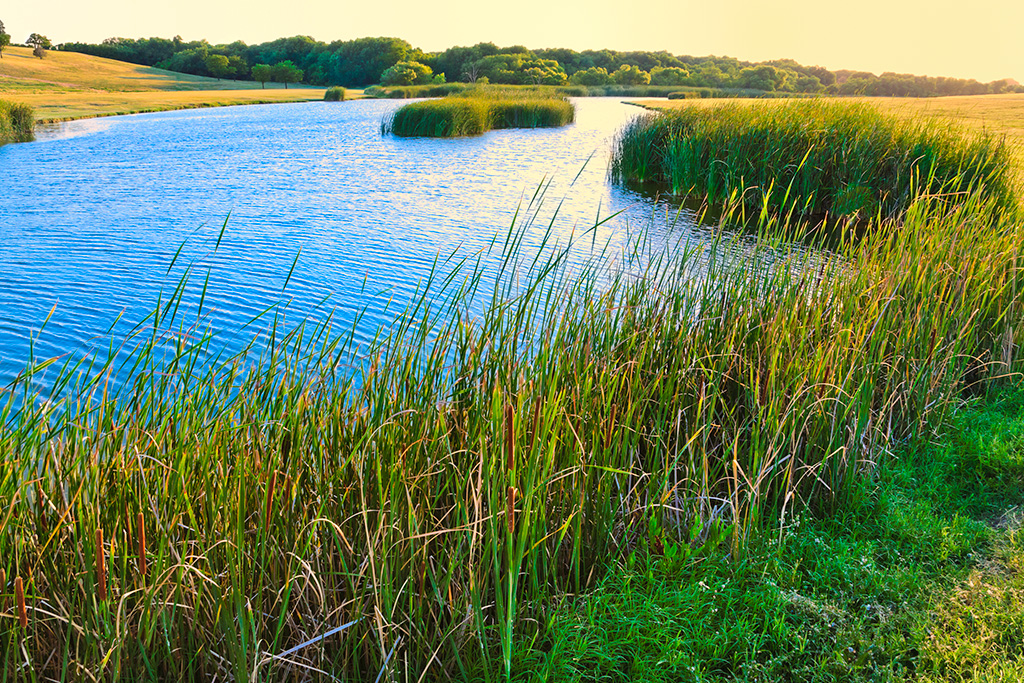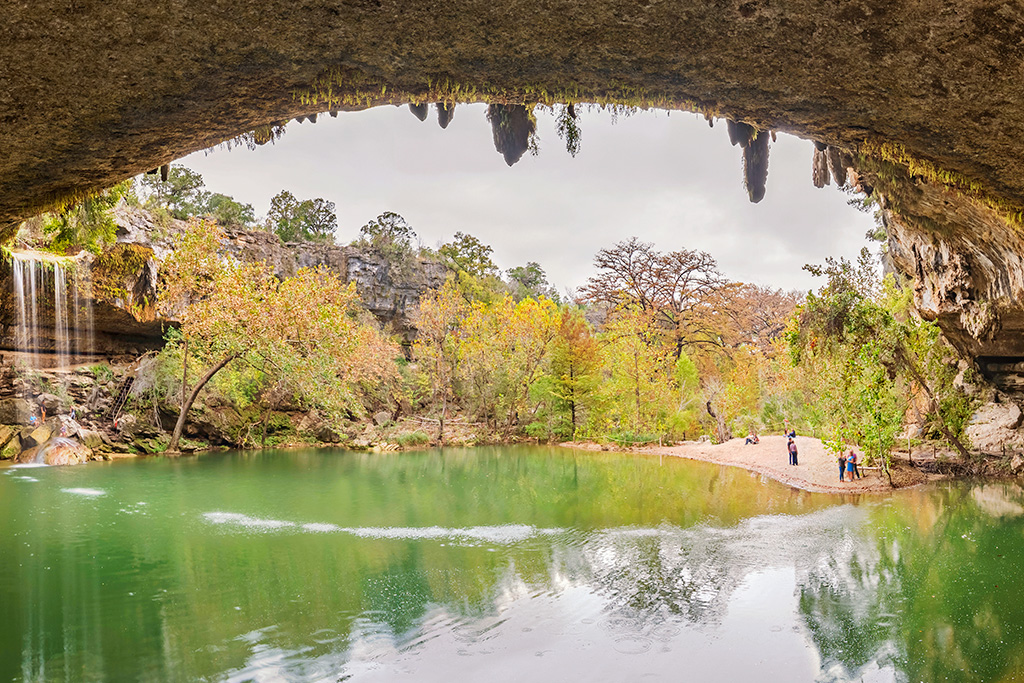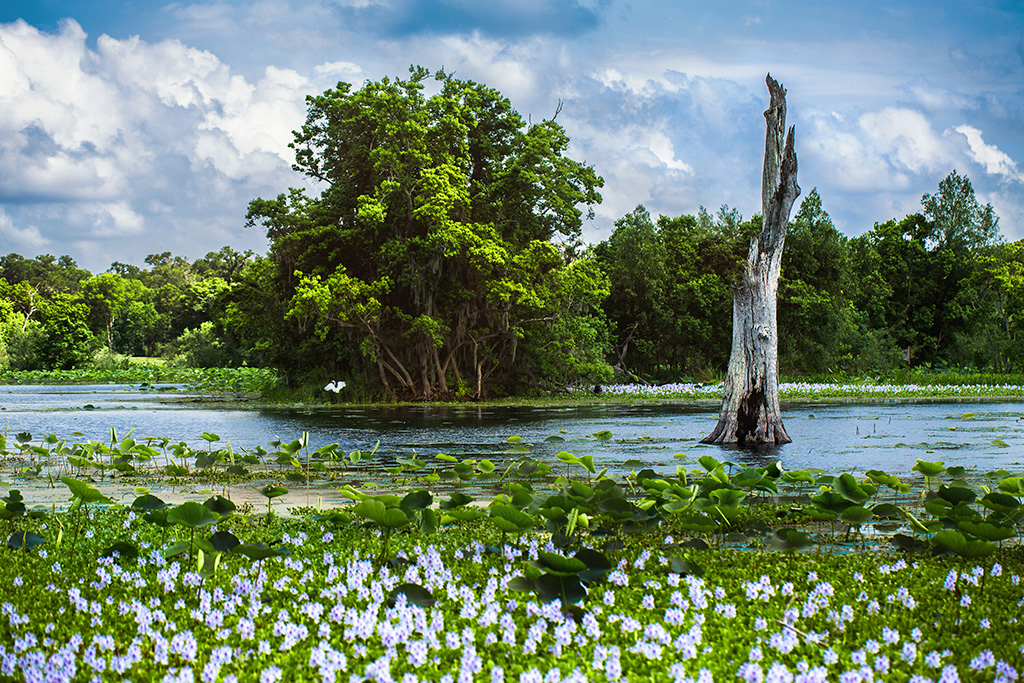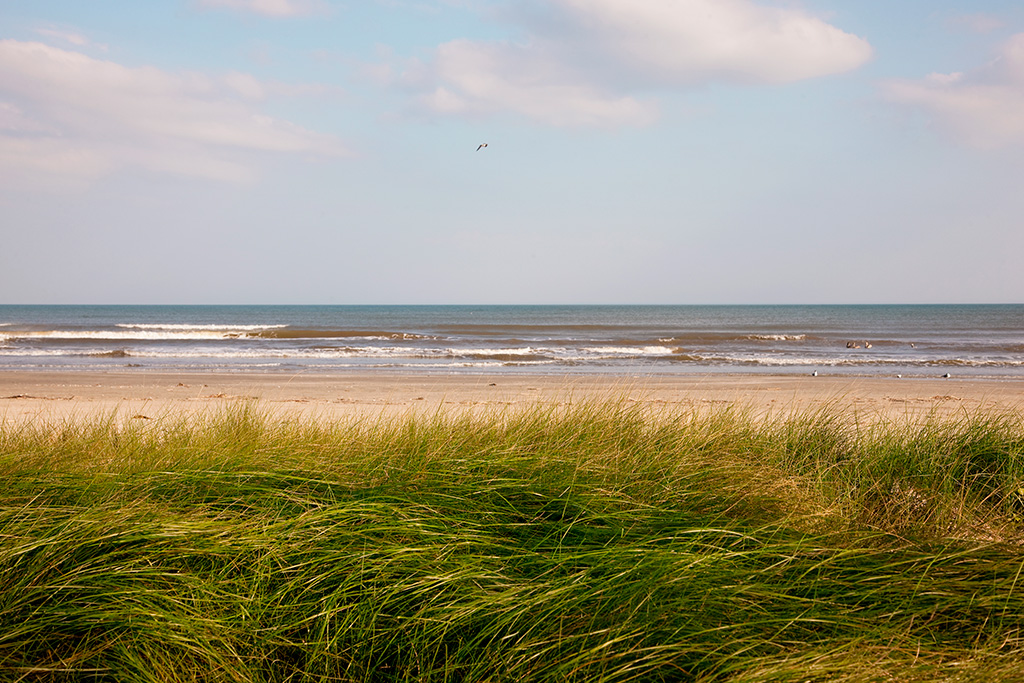Are Texas’ Waters Safe?
No one knew why Josiah McIntyre was sick. In 2020, the 6-year-old boy from Lake Jackson complained of a headache. He then developed a fever and began to vomit. Within a few days, he died. Doctors recognized the horrible and sudden illness as the result of a rare brain-eating amoeba, for which there is no treatment. It was later determined that McIntyre had likely encountered it while playing in a Lake Jackson splash fountain.
McIntyre’s unprecedented death was a terrifying reminder of the dangers that lurk in Texas’ waterways. While the state boasts some of the prettiest lakes and rivers out there, in recent years new dangers like zebra mussels, toxic algal blooms, and brain-eating amoebas have infiltrated both natural and human-made water supplies. Generally, Texas’ water is still a safe way to enjoy a recreational spring day. But it is wise to stay informed of the dangers that exist in their depths.

SPACE INVADERS
Zebra Mussels
What Are They? If you scooped up a handful of zebra mussels, they might not look like anything particularly harmful. About the size of a fingernail, the freshwater mollusks first arrived in the United States from their native Eurasia by hitching a ride on large ships traveling to the Great Lakes. From there, they spread fast. Although they are tiny, a single zebra mussel can produce a million microscopic larvae. Because they are so small, zebra mussels can adeptly find their way into nooks and crannies of boats. They are believed to have arrived in Texas around 2009 and since then have spread quickly from the bottoms of our boats to dozens of lakes.
What’s the Risk? Like many invasive species, zebra mussels can wreak havoc on local ecologies. They kill native algae that many native species need for food. Zebra mussels can also become clogged in power plants and water filtration facilities, potentially damaging them and posing a risk to regional water supplies.
How to Stay Safe: Zebra mussels don’t pose a direct risk to you in the water, but you should make sure you are not contributing to their spread.
How to Keep Texas Waters Safe:The most important thing you can do to help stop the spread of zebra mussels is to be meticulous about cleaning boats and watercrafts after using them in Texas lakes — that’s the primary way they spread around the state. If you spot any mussels while out on the water, be sure to report them to the Texas Parks & Wildlife Department.

Toxic Algal Blooms
What Are They? Algae are microscopic, single-celled organisms common in marine and freshwater environments. In certain conditions, harmful strands of algae can rapidly multiply and take over aquatic ecosystems. This can occur when there is an increase in nutrients — such as fertilizer runoff — or a change in water temperature, sunlight, or some other environmental factor. There are two main kinds of toxic algal blooms: golden alga and red tide. Golden alga primarily affects fish, while red tide can make humans, pets, and other animals sick.
What’s the Risk? In Austin in 2019, a red tide toxic bloom was responsible for the death of five dogs. The toxins created by the algae can irritate skin and cause respiratory problems. Golden alga is less toxic to humans, but it can still kill fish and other aquatic life.
How to Stay Safe: If water appears to be foamy or discolored, avoid it. Don’t let your pets play in bodies of water that aren’t free flowing. If you see or suspect a toxic algal bloom, or if you see dead fish in a body of water, report it to the Texas Parks & Wildlife Department, which monitors and tracks water conditions, at 512.389.4848.
How to Keep Texas Waters Safe: Unfortunately, there aren’t any ways to remove or eliminate toxic algal blooms once they have taken over a water source, but we can mitigate their spread by addressing their root causes. This includes limiting runoff of fertilizer and chemicals from agriculture and home irrigation, increasing the amount of dissolved oxygen in a body of water by adding aeration systems such as spray fountains, and restoring the health of shorelines, which naturally provide a buffer of vegetation that can filter harmful runoff algae feed on.

INVISIBLE ENEMIES
Brain-Eating Amoebas
What Are They? The scientific name is Naegleria fowleri. It is found in warm bodies of fresh water, hot springs, unmaintained swimming pools, water heaters, and soil. The amoeba thrives once water temperatures hit 115 F but has also been found in lakes and rivers that are much cooler; it typically feeds on naturally occurring bacteria living there.
What’s the Risk? A Naegleria fowleri infection causes symptoms including headache, fever, nausea, and vomiting. As the disease progresses, the amoeba attaches to the brain tissue, which can lead to a stiff neck, confusion, loss of balance, seizures, and hallucinations. The infection is particularly dangerous as it progresses rapidly and can cause death within five days of symptoms emerging.
How to Stay Safe: The good news: Infection with Naegleria fowleri is very rare. There have been 151 people known to have been infected in the U.S. between 1962 and 2020. However, at this time, there aren’t any proven treatments for infection, and all but four of those 151 people died of the infection. To avoid infection, limit your contact with warm bodies of water where Naegleria fowleri is known to be present. If you are swimming in warm water, try to avoid allowing water to go up your nose, which is the primary route for the amoeba to enter the body.

Bacteria Contaminations
What Are They? There are several different kinds of naturally occurring bacteria living in Texas’ waterways that can be harmful to humans. One commonly found in salt water is Vibrio vulnificus, which can cause a skin infection when it comes into contact with an open wound. Sewer runoff from heavy rains can also wash bacteria — along with grease, oil, chemicals, and manure — into the ocean.
What’s the Risk? A recent report found that 55 Texas beaches were deemed “potentially unsafe” on at least one day in 2020 due to the presence of fecal bacteria resulting from stormwater runoff. That means virtually anyone swimming in the Texas Gulf is at some risk for infection. People with liver disease, cancer, diabetes, or HIV, or who are on medications that suppress the immune system or decrease stomach acid are at increased risk of serious infection.
How to Stay Safe: Infections most commonly occur through open wounds, so avoid swimming if you have an injury or have had a recent surgery, piercing, or tattoo. If you have an open or healing wound, wrap it in a waterproof bandage. Wash yourself thoroughly after swimming in a body of salt water.
For more Texas water safety tips, read our guide on safe boating practices.
© 2022 Texas Farm Bureau Insurance



